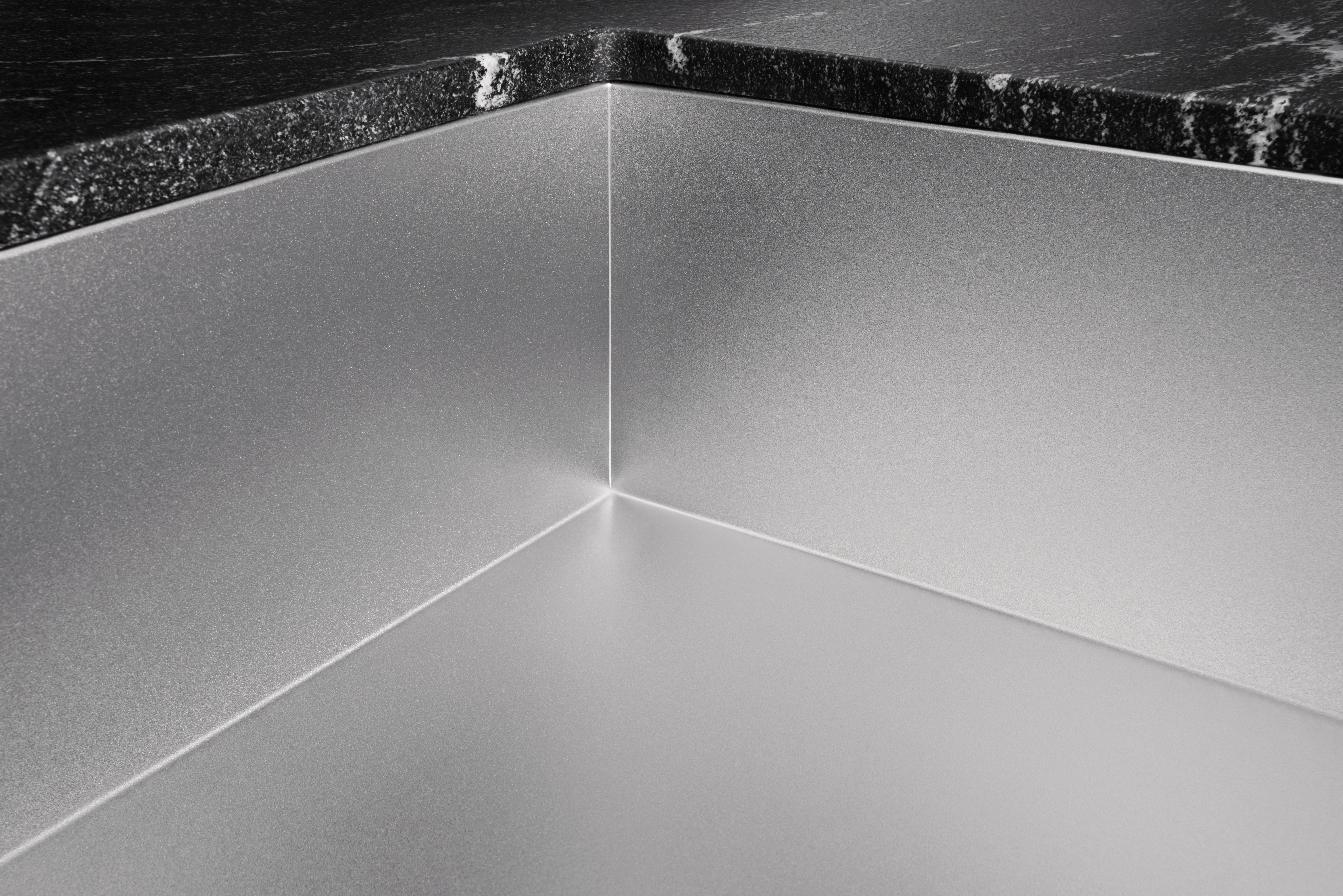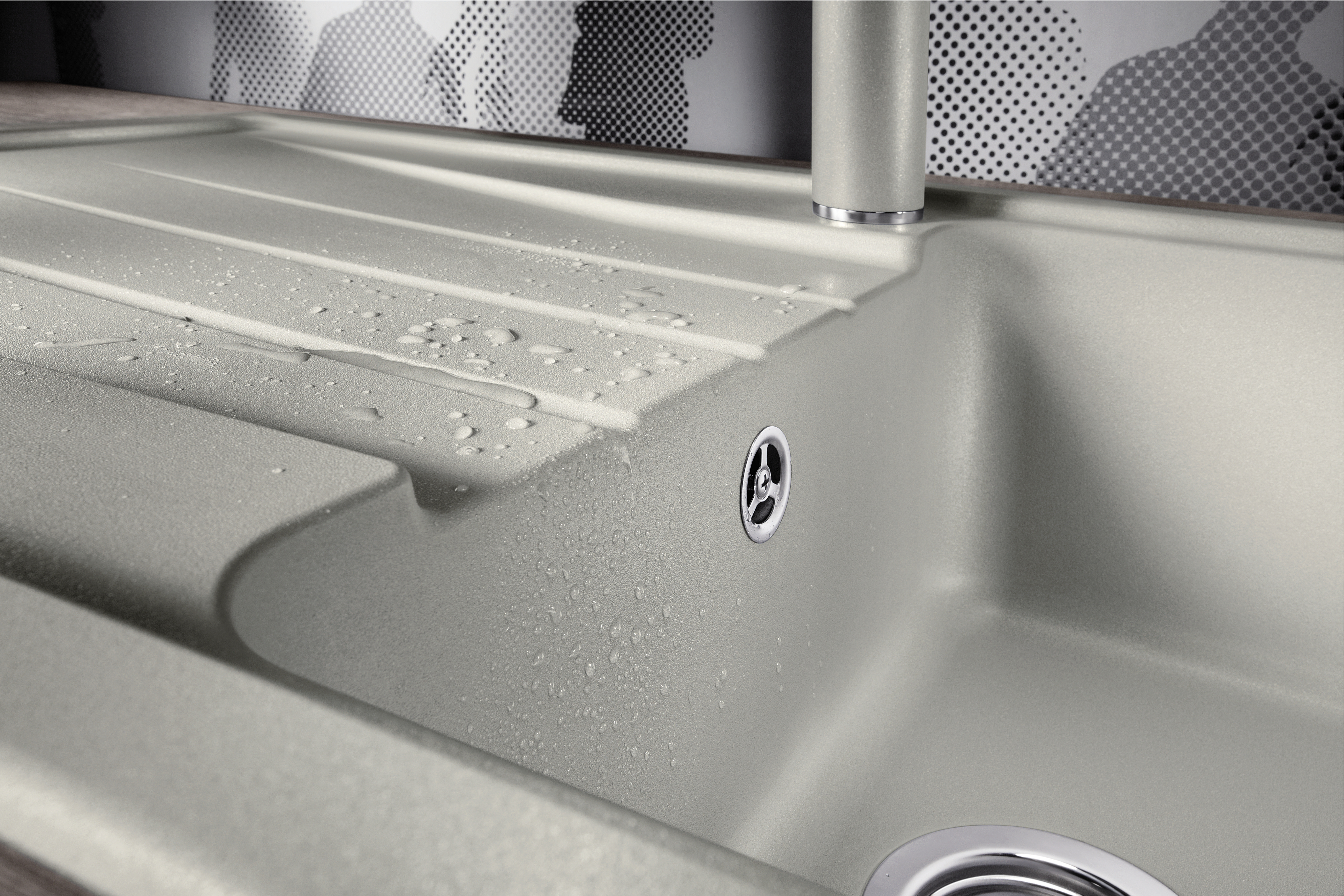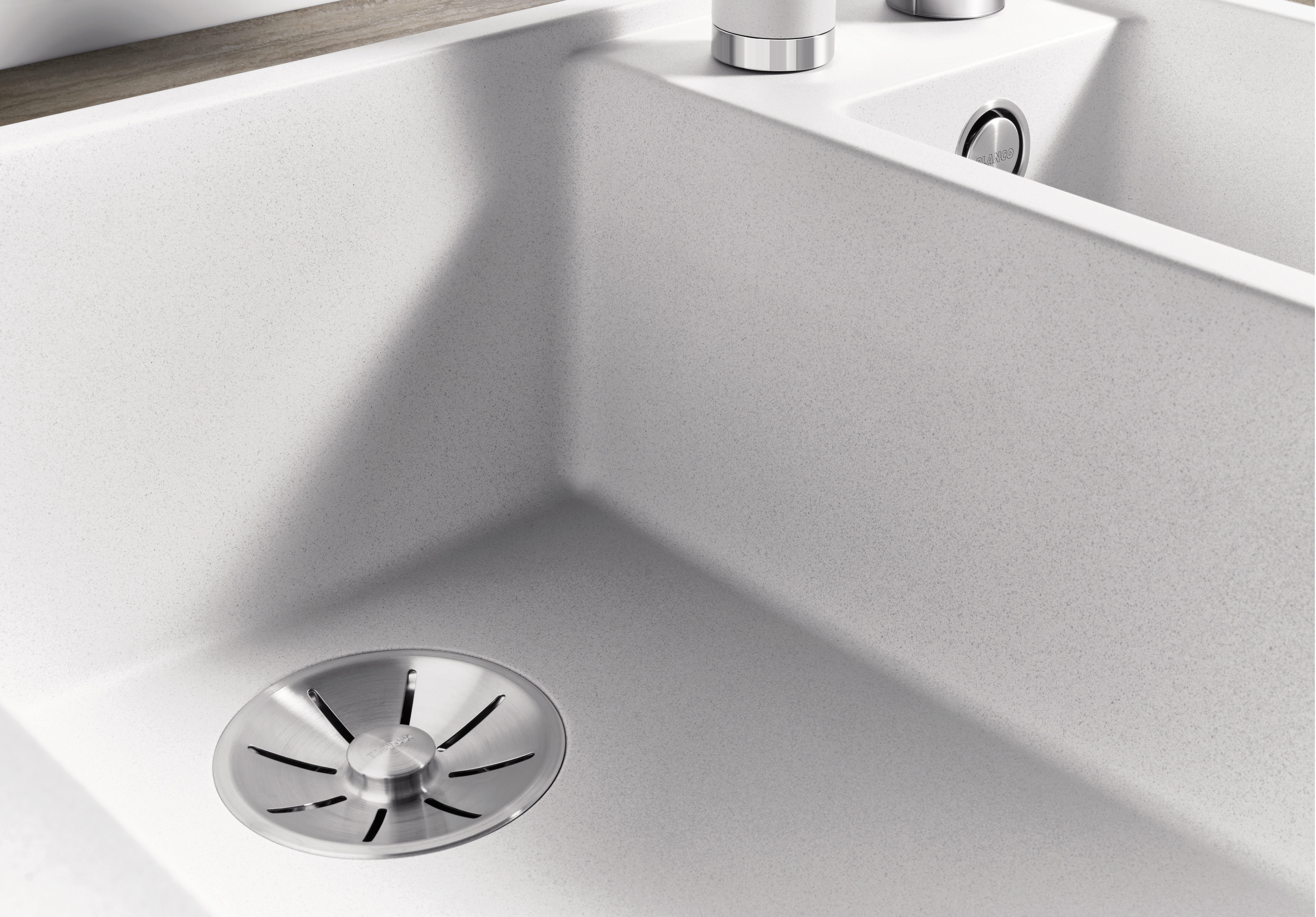Recommendations for kitchen sinks
How to find the right bowl
There are lots of kitchen sinks out there, but which is the right one for you? Our recommendations for sinks and bowls and the basic questions that you need answered before buying will help you make the right choice.

Choose the right sink for your personal kitchen design
Lots of questions need to be answered when planning a new kitchen, and even more decisions need to be made. If you don’t want to lose your bearings, you should think carefully about what you like to do in your kitchen and where you spend a lot of time. One underrated element of the kitchen is the sink. Although the majority of kitchen tasks take place around the sink, the choice of sink is often based on old habits and lack of awareness for new designs. That’s why it’s worth thinking more carefully about your kitchen sink.
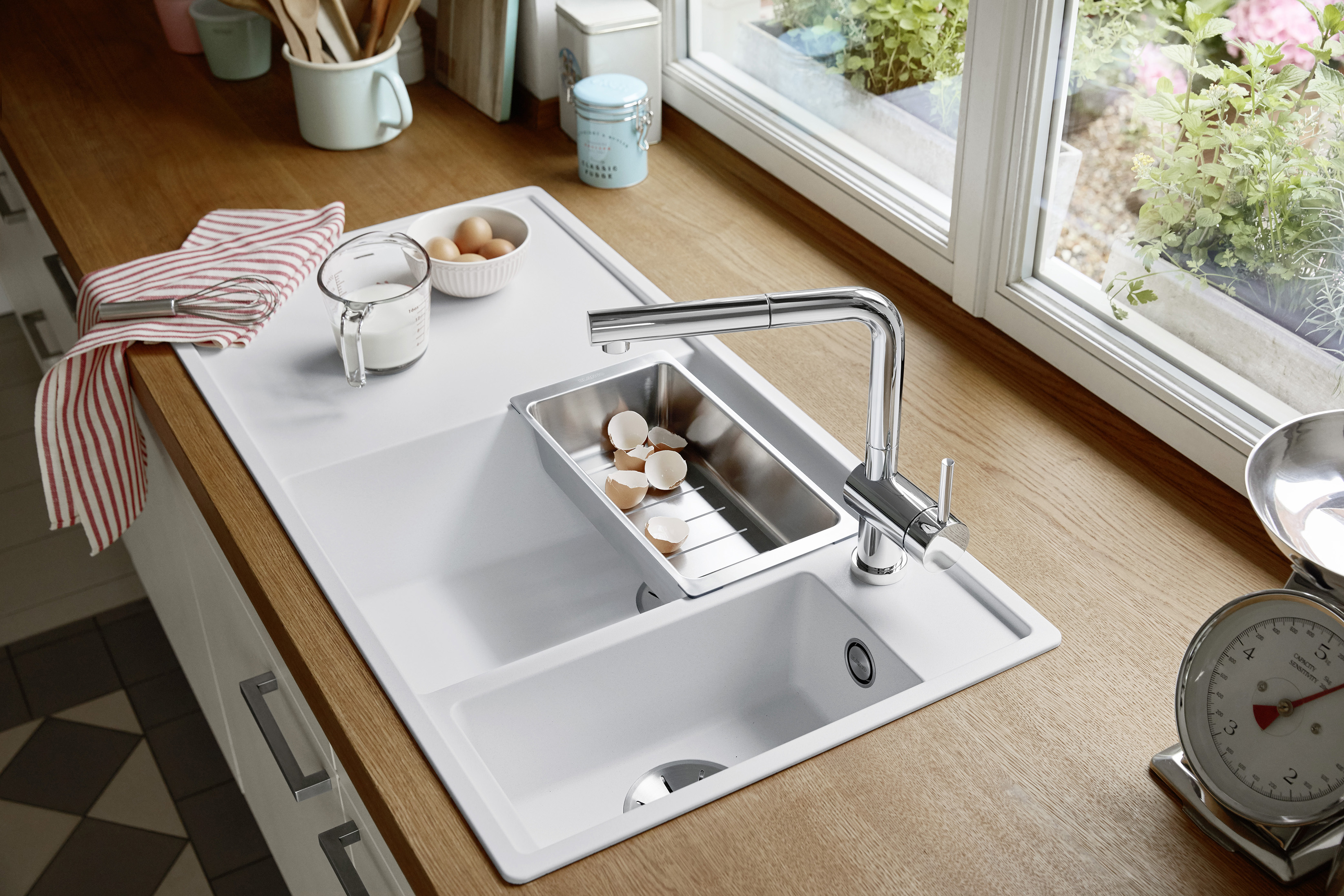
Do you need a drainer for your sink?
If you do, how big should this be, and on which side should it go?
Could a crockery basket in your sink offer enough space for draining and therefore help you to save storage space on the worktop if your kitchen is small?
Then you should look around for a bowl without a drainer.
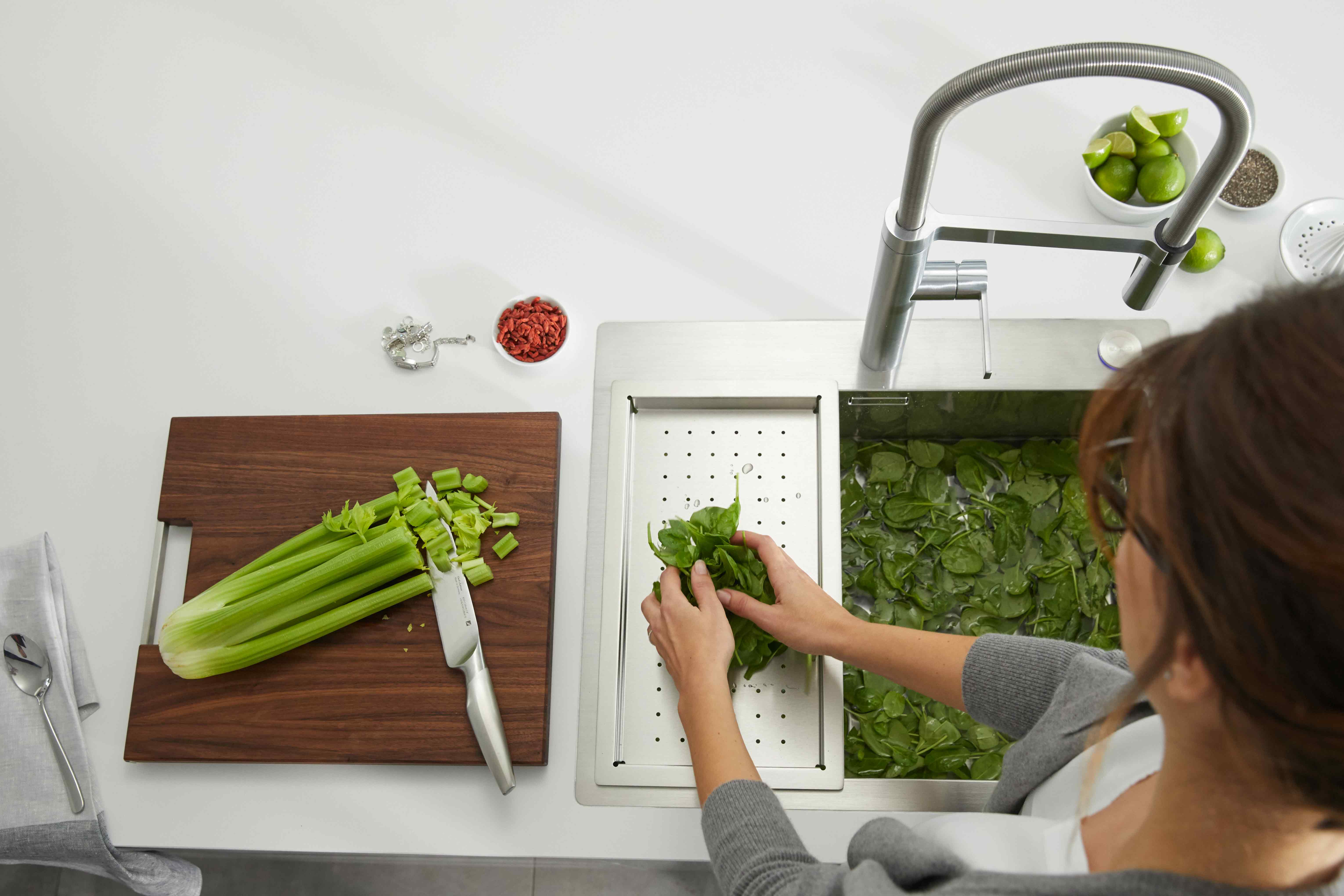
There are lots of different sink versions, as in addition to the drainer, other bowls or sink accessories can determine how you work at the sink. If you need an overview of the different types of sink, take a look at our explanation of corner sinks, double sinks, and sinks with or without a drainer.
The basics of buying a sink: how can I tell whether a sink is high-quality?
Together with the sink design – which should fit with how you use it – there are a number of important criteria to bear in mind when making your choice. The most crucial of these are quality of the sink material and the workmanship. Together with ease of maintenance, these determine the longevity of the sink.
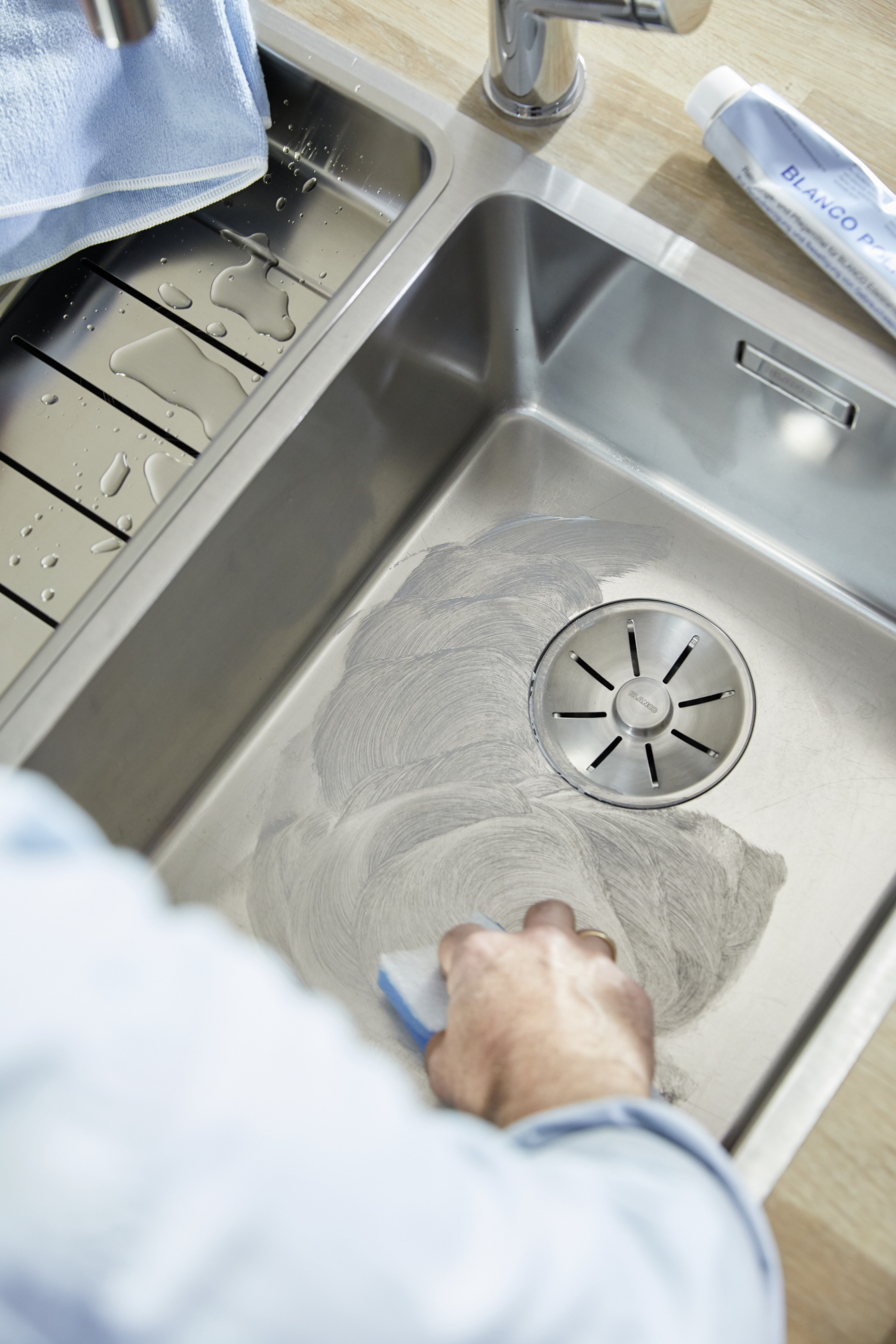
Everyone wants a good-quality sink
But what does good quality actually mean when it comes to a kitchen sink? What should you look for in particular?
The quality of a sink is the result of the material, its workmanship and any complementary components of the sink, such as the drain or basket strainer, and the overflow. Ease of maintenance, robustness and lots of other sink properties depend largely on the material. The material properties of stainless steel sinks, ceramic sinks or granite sinks made of silgranit differ from one another and should be weighed up carefully.
Manufacturing quality of a sink
You can determine whether a stainless steel sink has been manufactured to a high standard by details such as the sink’s radii and corners. The surface should be smooth and even in the rounded areas. Former welded joints in deep sinks should not be recognisable as such. Last but not least, high-quality manufacturing naturally means polished edges, without any sharp corners, on the sink itself and on any accessories and components.
Coordinated down to the last detail
With silgranit or ceramic, you can take a close look at the fitted components, such as the basket strainer and the overflow. If these are even with the sink, fit exactly and sit in the middle, then it's been well made. As silgranit and ceramic sinks are produced differently to stainless steel, narrow radii are not feasible here to the same extent. Nevertheless, even with these materials, the surface of the rounded parts should always be smooth and even. There should be no colour gradients in the coloured sinks made of silgranit and ceramic, or particles in the material.
Our bestselling sinks and bowls
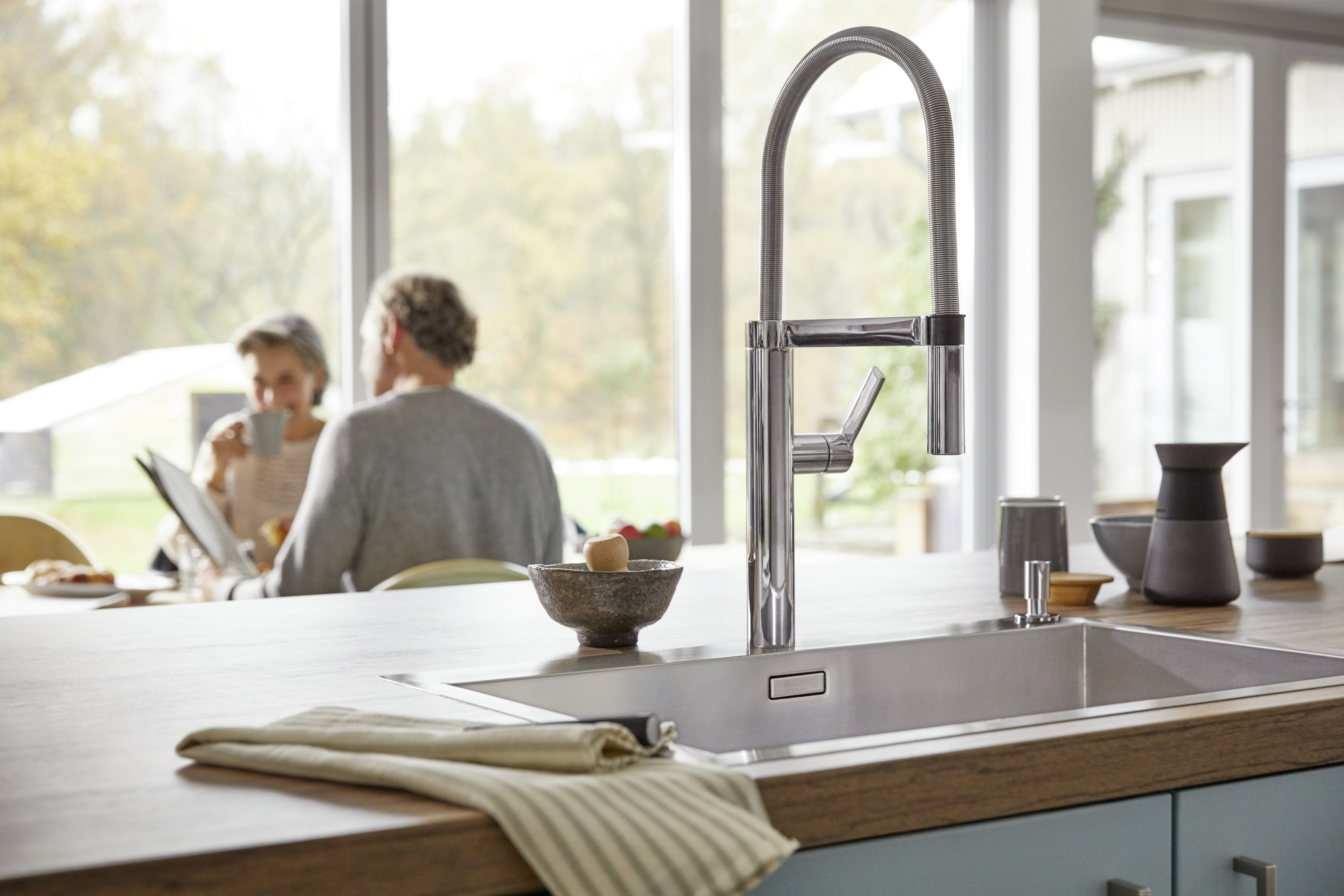
Which kitchen sink do you need?
Alongside specific details such as the number of bowls, other design features and recommended quality standards, the right choice of sink is completely up to you. It depends on your kitchen, your design ideas, your budget and your taste.
You’re aware of the most important features already. Browse the sinks and bowls from BLANCO carefully and compare them with one another. This is the only way of finding a sink that will provide you with optimal support later on in your day-to-day kitchen tasks.
